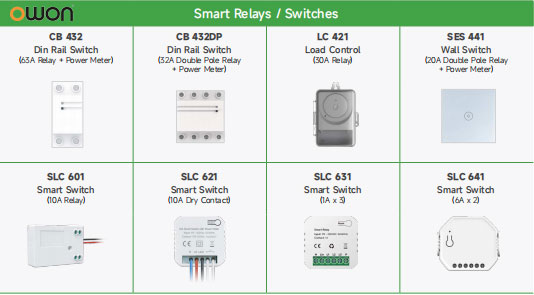Electrical systems in homes and commercial buildings are evolving rapidly. Equipment such as heat pumps, water heaters, refrigeration units, and workshop tools now require more intelligent control than ever before. This is why many users search for the term power meter smart switch—a device that integrates switching, protection, and real-time energy measurement into one compact module.
Understanding What Makes a Smart Switch “Smart”
A smart switch does more than simply turn a circuit on or off. It captures detailed electrical data, including:
-
Voltage and current
-
Active and reactive power
-
Cumulative energy usage
-
Power factor and load behavior
With this data available in real time, users gain visibility into how equipment behaves throughout the day. For buildings where specific circuits represent a significant share of electricity use, this insight becomes essential.
Why Circuit-Level Visibility Matters
Many electrical loads consume more energy than expected, especially older or inefficient equipment. Without monitoring at the circuit level, it becomes difficult to detect:
-
Overloaded or underperforming equipment
-
Appliances drawing excessive standby power
-
Irregular heating or cooling cycles
-
Loads that run longer than intended
-
Opportunities to shift usage to off-peak hours
A power meter smart switch provides the missing visibility needed to make better decisions.
Where Smart Switches Create the Most Impact
1. HVAC and Heating Systems
Heat pumps, furnaces, boilers, and fan coils often cycle unpredictably. Monitoring their real-time energy usage helps detect anomalies early and supports preventive maintenance.
2. Solar and Energy-Storage Installations
Smart switches can be used to control loads based on solar generation or battery charge levels. This helps maximize self-consumption and reduce grid dependence.
3. Hotels and Commercial Buildings
In hospitality and office environments, smart switches integrate with room-automation systems to control lighting, heating, and high-power appliances efficiently.
4. Industrial Workshops
Tools, motors, pumps, and production equipment benefit from both switching and accurate metering. Circuit-level data supports safety, improved scheduling, and better equipment utilization.
What to Look for in a Power Meter Smart Switch
For reliable long-term operation, a smart switch should include:
-
High-current relay options (10A–63A)
-
Durable, heat-resistant materials
-
Overload and overcurrent protection
-
Zigbee or Wi-Fi connectivity
-
Accurate metering hardware
-
Compatibility with automation platforms
Solutions commonly used in commercial environments include in-wall smart switches, DIN-rail relay modules, and multi-channel control units. A product such as a
smart switch with power monitoring offers this combination of switching, protection, and precise energy measurement, making it suitable for HVAC systems, appliances, and various commercial or industrial loads.
A Building Block for Smarter Energy Management
As buildings become more connected and energy-aware, circuit-level insight has become a core requirement rather than a luxury. Smart switches help reveal how equipment actually consumes electricity and enable more effective control and automation.
Whether installed in a small mechanical room or across multiple circuits in a commercial facility, a power meter smart switch provides clarity where it matters most—directly at the load. It’s a practical foundation for energy optimization, preventive maintenance, and smarter electrical infrastructure.
